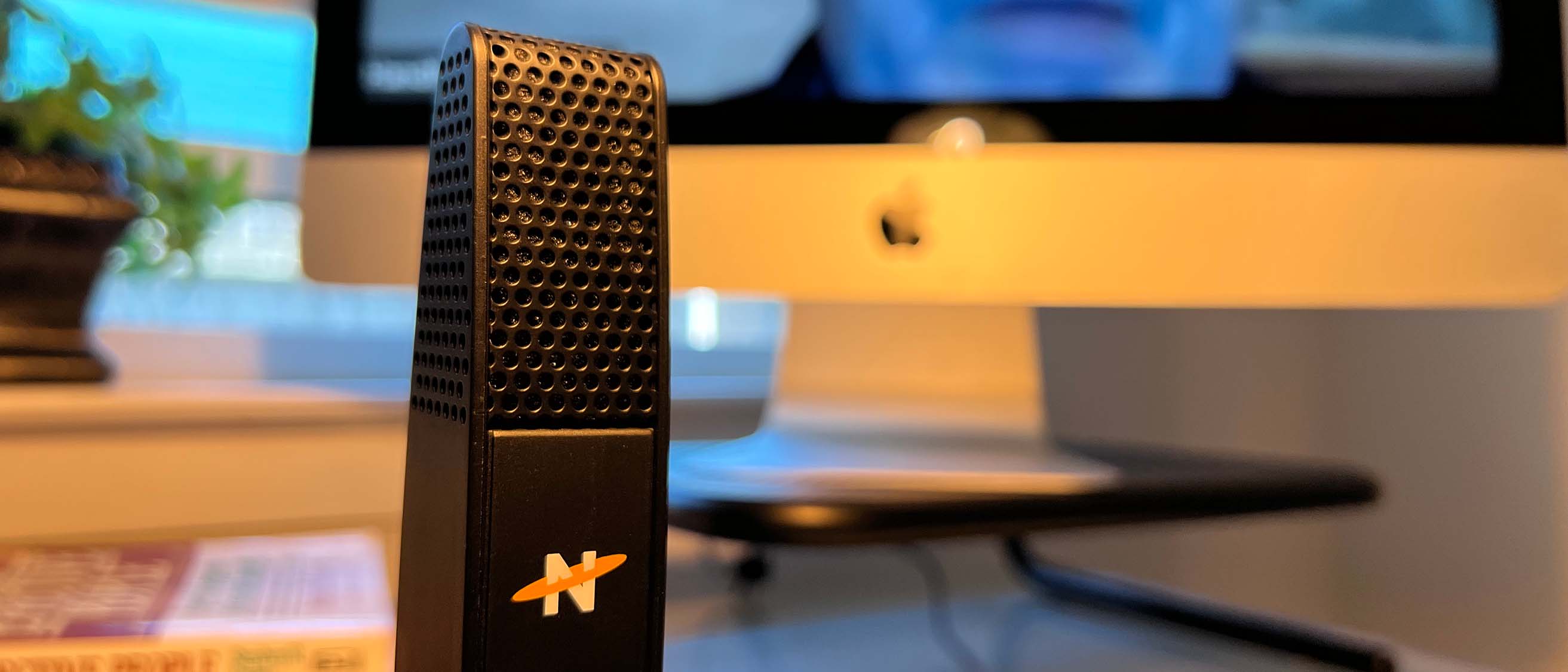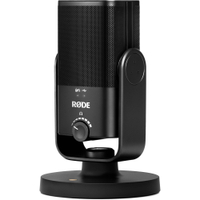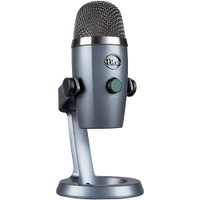TechRadar Verdict
The Neat Skyline USB microphone is a capable device that offers a lot for certain users. As a video conferencing USB microphone, the Skyline more than holds its own against many well-known and highly regarded competitors. For content and podcast production, though, you'll want to look elsewhere.
Pros
- +
Microphone sounds great
- +
Easy plug and play
- +
Intuitive design
- +
Reasonable footprint
Cons
- -
Not for content production
- -
One polar pattern
- -
No input gain control
- -
No headphone monitoring
Why you can trust TechRadar
Neat Skyline: Two minute review
The Neat Skyline is a USB conference microphone that looks and sounds great, with an effective, simple, and intuitive design. However, it's definitely all business, no matter what the packaging tells you.
Ideal for the business or work-from-home user, its sensitive condenser microphone capsule achieves fantastic audio fidelity, and the Skyline seamlessly integrates into video conferencing software such as Zoom, Microsoft Teams, and Facetime.
A quick setup in your computer’s sound settings is all you need to get started, making it one of the best USB microphones for remote workers, business travelers or maybe someone who is live streaming audio online.
Unfortunately, the Skyline does have shortcomings, namely as a podcasting or audio production mic. The Skyline has no input gain control and no headphone output, which is an essential feature of content producing mics.
And comparatively speaking, other microphones reasonably within the Skyline’s price range do feature input gain control and output monitoring, so it’s disappointing that the Neat Skyline doesn’t feature these options. Readers looking for those more production-level features will have to look elsewhere.
Neat Skyline: Price and availability
- How much is it? MSRP is $69 / £59 /AU$99
- When can you get it? The Neat Skyline USB microphone is available now
- Where can you buy it? You can get it in the US, UK, and Australia
The Neat Skyline USB microphone is priced at $69 / £59 / AU$99 and is available in the US, UK, and Australia. It’s priced competitively, but there are other great values for USB microphones in this price range, especially if you’re willing to pay a little bit more.
If you are really interested in podcasting or content creation you can spend $30 more for the Neat Bumblebee II which does include input gain control and a headphone output.
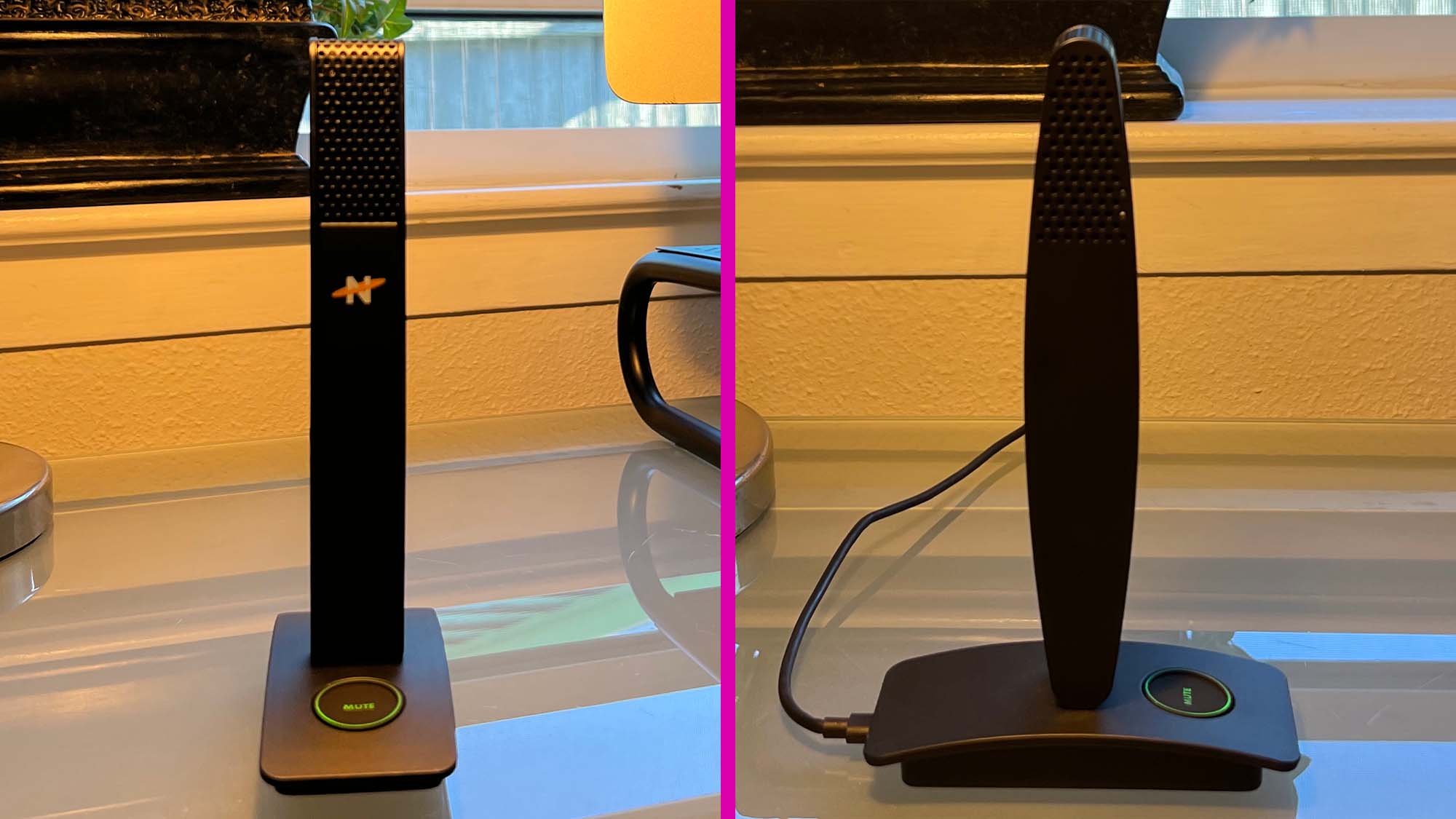
Neat Skyline: Design
- Very intuitive, easy to use
- Very professional aesthetic
- Comes in White or Black
The Neat Skyline USB microphone is well-built and designed for the corporate environment. Professional users probably don't need a colorful, attention-getting microphone, and the Skyline is built to blend in, not stand out.
Its form follows function, as one of the most important features of its design is a well illuminated and comfortable to use “MUTE” button. This might sound like a somewhat elementary point, but there are some real world examples of high priced, professional push-to-talk and mutable microphones that do not clearly show how to access the talk or mute features. The Neat Microphone company did an admirable job having designed a user-friendly button function that takes the guesswork out of its operation.
The Neat Skyline microphone is not detachable from its base, so it will not work with an extendable boom arm. The Skyline’s base is robust and well-constructed utilizing four small rubber feet to hold its place on surfaces. While there is an internal shock mount, the considerable sensitivity of the microphone capsule can still pick up low end and unwanted noise.
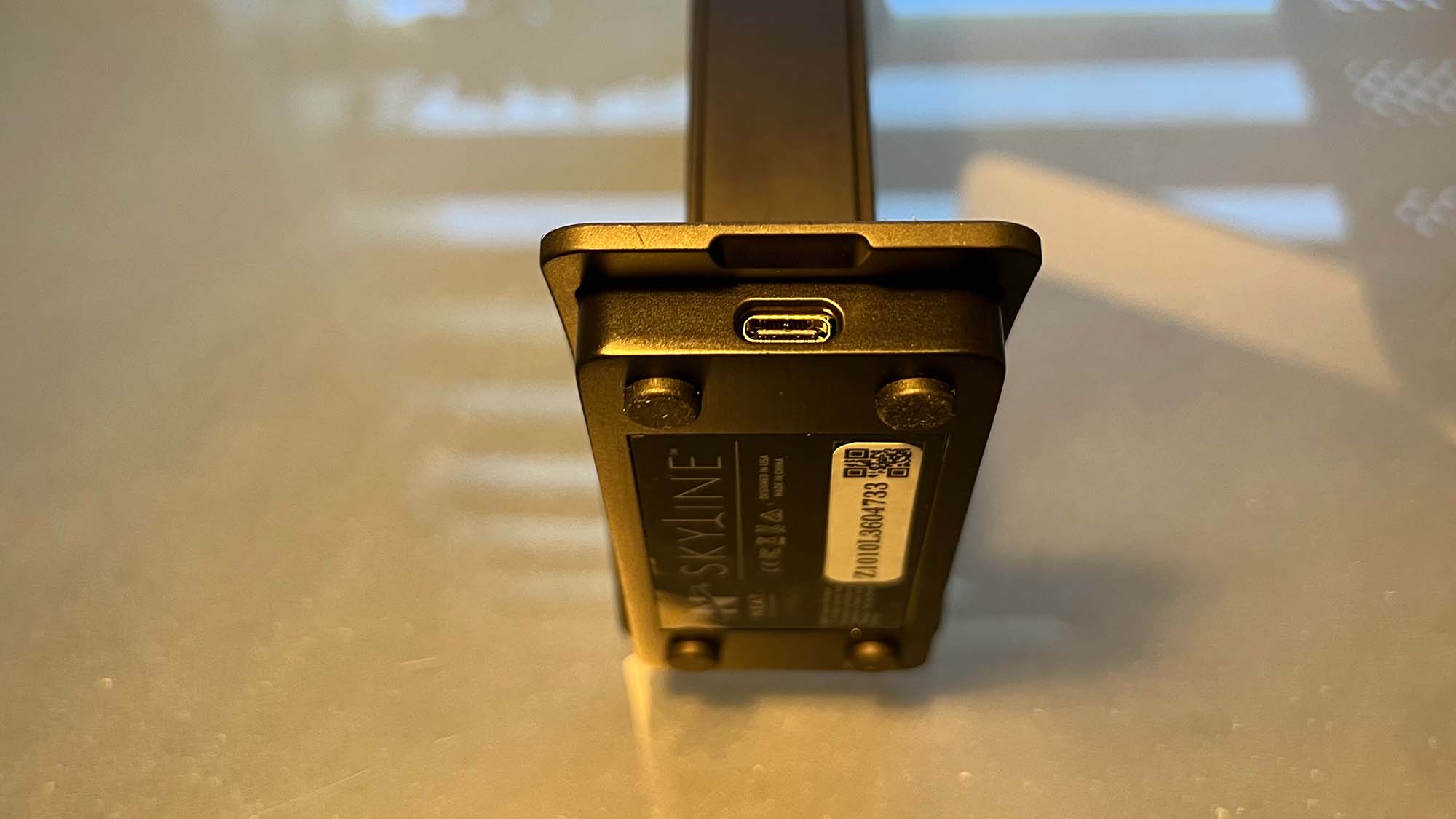
Neat Skyline: Features
- Connects via a USB-C to USB-A cable (included)
- Clearly visible “Mute” button functionality
The Neat Skyline USB microphone includes a USB-C to USB-A connection cable measuring approximately six feet long. This means that you’ll have plenty of maneuverability at your next Zoom meeting. Take note Apple fans, if you’re one of those MacBook Pro or MacBook Air users that only have USB-C ports on their laptops, you might have to purchase an adapter or a USB-C to USB-C cable separately.
We didn’t expect that the Neat Skyline’s rubber “Mute” button would warrant much attention during testing but it really is pleasant to use during a video conference. With a rubber texture and LED illumination, it’s easy to see and feel in a variety of lighting conditions. The Neat Skyline comes in white or black finishes, so whatever the office environment looks like, there is a Skyline that will work with the aesthetic.
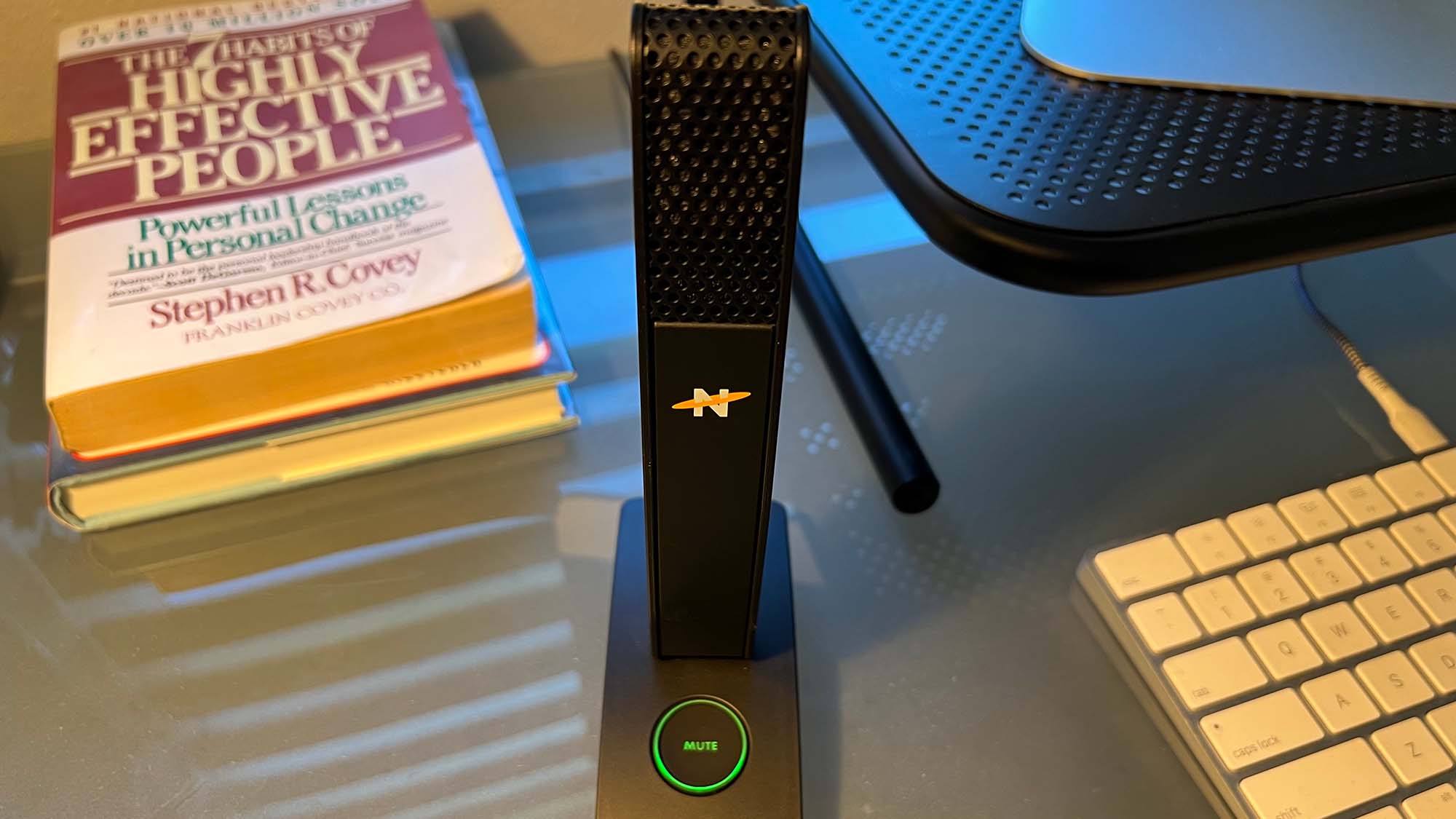
Neat Skyline: Performance
- Condenser microphone is outstanding
- Cardioid polar pattern only
- Be aware of driver issues
Connection: USB Type-C
Polar pattern: Cardiod
Sample Rate: 96 kHz
Bit Depth: 24 bit
Weight: 6.3oz / 179g
Dimensions: 7.75 x 4.75 x 2 ins / 196.85 x 120.65 x 50.8mm
The Neat Skyline microphone houses a condenser microphone capsule which is incredibly sensitive. The Skyline has a sample rate of 96kHz and a bit depth of 24 bits. This is impressive audio fidelity for the price, and one might argue it’s a little too sensitive for its intended use.
While a user’s voice will sound fantastic over an internet connection, the microphone is also sensitive enough to pick up the lightest keystrokes on your keyboard. be careful not to place the mic too close to your keyboard or to set your input gain too high.
The Neat Skyline boasts a cardioid polar pattern which reduces audio capture from the rear of the microphone. The lack of other polar patterns make the Neat Skyline a poor choice for interviews and roundtable discussions, however, that’s fine since the Skyline is really intended for personal use only. The Skyline features an internal shockmount, but the sensitivity of the microphone’s condenser capsule can overpower these features and is likely to capture unwanted noise and possible low end rumble in a noisy environment.
The Skyline microphone doesn't possess a headphone output, so this means that you will need to hear your audio through another output device (such as your computer’s speakers). There’s no input gain control on the microphone itself, either, so you'll have to make all adjustments to your input and output levels through the sound settings on your computer.
Any audio adjustments made while using the Skyline during recording will be cumbersome for most, and the lack of dedicated input/output control creates an overly complicated workflow for content creation. In comparison to the other USB microphones in this price range, you can find USB mics that do offer headphone output monitoring and input gain control on their devices.
Finally, recording into one of the many digital audio workstations that today’s content producers use may invite significant frustration. User-friendly workstations such as the open source Audacity, Apple’s Garageband and Logic Pro X, allow for simple routing of the Skyline microphone into the input of these programs. No problem here!
Things get complicated when using programs such as Studio One or Pro Tools as your workstation. Certain professional recording software programs require the appropriate drivers on your computer to enable the Skyline to connect to the input channel and, to be perfectly honest, this can become a huge headache.
All this is to say that the Skyline is an excellent video conferencing microphone but is not a suitable option for serious podcasting or content creation. If you're looking for the former, definitely give the Neat Skyline a look; otherwise, you're much better off looking elsewhere.
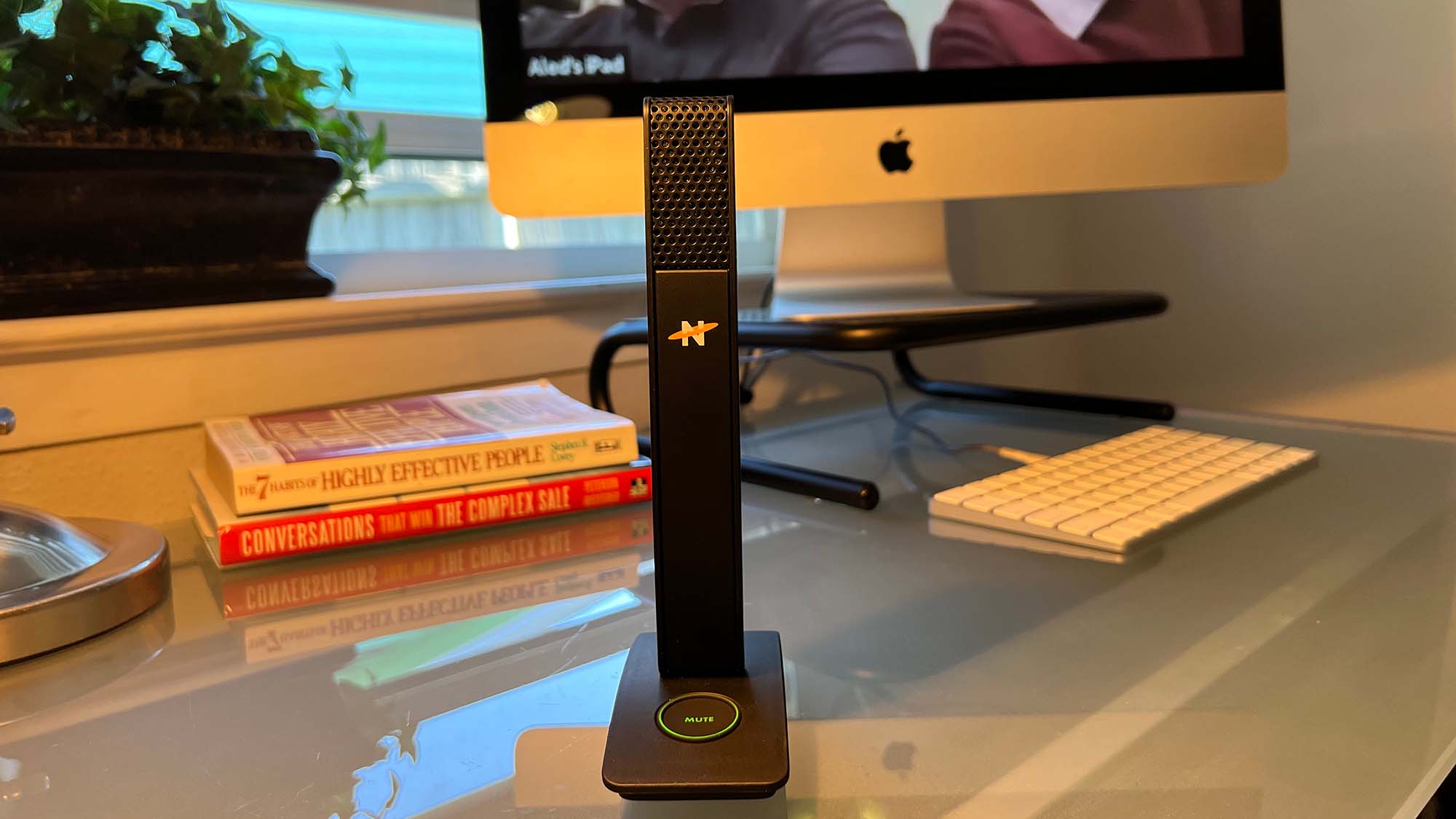
Buy it if...
You need an excellent sounding USB microphone for work
The Skyline sounds great while video conferencing and is easy to setup.
A quick mute option is important
The mute button on the mic doesn't seem like it should matter, but an intuitive mute function on a mic is surprisingly useful.
You want something that blends into the office
The Skyline isn't flashy and comes in both white and black, making it a great mic for an office setup.
Don't buy if...
You need a mic for content production
The Skyline is great for making video calls, but it has real trouble with professional audio software and it doesn't have the features that are essential to audio production work.
You need headphone output or input gain control
If you need to control the mic's input or monitor its output, you'll be out of luck on both country here.
You’re looking to record more than one person at a time
The cardioid polar pattern will pick up a single person perfectly, but if you have a room full of people or you're doing an interview, you aren't going to get the quality you need here.
Also consider
Rode NT USB Mini
It costs more than the Neat Skyline. However, you actually get all of the features you need to record podcasts and content.
Read the full Rode NT-USB Mini microphone review
Blue Yeti Nano USB
A strong contender in the USB microphone market, it costs a little more than the Neat Skyline but you get all the features you need for content production.
Read the full Blue Yeti Nano USB Microphone review
- First reviewed June 2022

Jeffrey (he/him/his) is an Audio Visual professional who has spent years working in the Corporate Audio Visual Industry. Specializing in audio, video, lighting, and computers, he has developed a deep interest in all live sound and event technology. Jeffrey currently lives in Texas.
